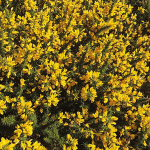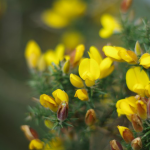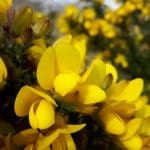Gorse / Spring / Summer / Autumn / Winter / Edible
Common Names
Gorse, Prickly broom, furze
Botanical Name
Ulex Europaeus
Scientific Classification
Kingdom – Plantae
Order –Fabales
Family – Fabaceae
Why not check out our Gorse foraging video?
Physical Characteristics for Gorse
Gorse is a woody shrub that can grow to be 0.5–2.5 m tall
Leaves
Gorse leaves are dark green, narrow, and spiky, with a sharp spine at the end. They are stalk-less and grow in clusters along the branches. 6–30 mm long and 1.5 mm wide.
Flowers
Flowers are bright yellow, pea-like and measuring 2cm in length. Gorse flowers are scented of coconut especially on sunny days.
Seeds
Gorse has slightly hairy purple-brown pods that are about 2cm long. Each pod contains 2–3 small, black seeds which are ejected when the pod splits open in hot weather.
Habitat
Very common, native to the UK and Europe.
Gorse has nitrogen fixing roots and does well in poor soils. Found on moors, shingle beaches, forest edges and waste ground.
Known Hazards
Only the flowers are considered edible and then only in small quantities. The seeds and pods are toxic.
Could be Confused with
It’s quite a distinctive plant, but it could be confused with Broom (Cytius scoparius) but Broom lacks spines.
Edible Uses
The flowers taste of coconut or almonds but some only get a bitter pea taste. They can also be used as a garnish.
I really like them added to drinks such as kombucha or here’s a nice rum recipe.
Notes on Herbal uses
Although very common the plant has never played an important part in herbal medicine.
Extra notes from the Foragers
There’s an old country saying “When gorse is out of blossom, kissing’s out of fashion”, this comes from the fact that with its long flowering season, you are almost always able to find some gorse blossom, somewhere!
References








